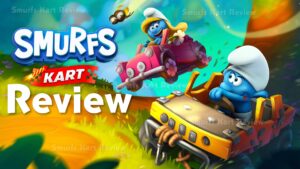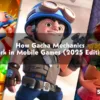Gacha systems in mobile games started out as simple “loot box” types, but by 2025 they have evolved into large parts of most mobile titles. Whether the game is about collecting characters, building a deck, or powering up a squad, the gacha system is often how you unlock the most important parts of the game.
The basic idea is simple: You spend a type of in-game currency to get a random item. This could be a new fighter, weapon, pet, card, or costume. Some games call this “pulling,” others say “summoning” or “rolling,” but it’s the same process. The key thing is you don’t know what you’re going to get.
While it can feel exciting to pull something rare, the randomness means you might also get a lot of items you don’t want or can’t use. That’s where understanding how the gacha works can help you make smarter choices.
Gacha Terms Explained in Simple Words
| Term | What It Means |
|---|---|
| Pull | One try at the gacha, often costs a set amount of in-game currency |
| Multi-pull | Usually 10 pulls at once, some games give a bonus for this |
| Banner | A time-limited event that offers certain characters or items |
| Rate-up | When a specific item or character has a higher chance to appear |
| Pity system | After a set number of pulls, you are guaranteed a top-level reward |
| Spark | A system where you get to choose a high-value item after many pulls |
| Free pull | A no-cost pull, often given daily or during special events |
| Step-up banner | Pulls that improve in value the more times you use them |
| Limited unit | A character or item that only appears during special banners |
These systems are not the same in every game. Some games offer clear drop rates and pity counters, while others are still more opaque. Always check the in-game details. Most modern gachas are required to show their chances clearly due to new rules in many regions.
Types of Gacha Rewards and What to Expect
Every gacha has its own rarity system. Most have at least three to five levels of rarity. Higher rarities usually have lower drop rates, but the items or characters are stronger, flashier, or more useful.
| Rarity Level | Drop Rate (Typical) | Value in Game | Comments |
|---|---|---|---|
| Common | 60–80% | Weak stats, basic materials | Used for upgrades, often discarded |
| Rare | 15–30% | Mid-tier gear, early-game units | Some have special upgrade routes |
| Epic | 5–10% | Solid characters or gear | Can carry you through content |
| Legendary | 0.5–3% | Strongest characters or weapons | Often locked behind high cost |
| Limited | 0.1–1% | Special designs or event-only | May not return for a long time |
Most players chase the limited or legendary units. They are usually the most powerful, and often the most fun to use. However, it’s easy to waste resources chasing these units if you’re not careful.
Example Pull Results
Imagine you’re doing a 10-pull on a standard banner. This is what it might look like:
- 5 basic enhancement materials
- 2 rare crafting tools
- 2 three-star characters you already own
- 1 four-star weapon that’s new to your account
You didn’t get the five-star unit you wanted, but you still gained resources and possibly a usable item. This is very common. Gacha isn’t about winning every time—it’s about managing your pulls to give yourself the best odds over time.
Why Games Use Gacha
Gacha isn’t just a reward system. It’s how many mobile games make money. Instead of charging a full price for the game, they offer it for free and let you decide if you want to spend money for more chances at stronger or rare units. In many cases, the whole game economy is built around this idea.
Some players spend thousands of dollars. Others play for years without spending anything. Both groups can enjoy the game, but each needs to play differently. Understanding how the system works is the first step to playing smart.
How to Decide When to Spend in Gacha
One of the biggest questions gacha players face is: Should I pull now or wait?
Most games throw a lot of banners at you. Some feature strong characters. Others are reruns. Some include new systems or bonus items. It can get confusing fast. But deciding when to pull or spend doesn’t have to be stressful if you use some basic checks.
Questions to Ask Before Pulling
These simple checks can help stop a bad pull decision before it happens.
- Do I truly want the unit or item being offered?
- Will it help my current team or playstyle?
- How much currency do I have saved?
- Can I reach pity if needed?
- Is there another banner coming soon?
- Does this character help me clear content I’m stuck on?
- Would pulling now hurt my chances of getting something I really want later?
You don’t need to say yes to every question. But if most answers are “no,” it’s often smarter to wait.
Situations and Suggested Pull Choices
Here are some real-world style situations and what players in each one might do.
| Player Type | Situation Example | Suggested Action |
|---|---|---|
| Casual player | Logged in daily, has 8,000 gems, likes a new character’s design | Save unless it’s their favorite |
| Mid-level grinder | Plays weekly events, has a decent team, likes the unit’s playstyle | Consider 10–20 pulls if pity is reachable |
| F2P collector | Wants to complete a unit collection, not worried about strength | Pull if they can reach spark or pity |
| PvP-focused | Needs latest unit to stay in top rank | Pull early to maintain advantage |
| Budget spender | Buys monthly pass only, unsure about current banner’s power | Wait and watch reviews from other players |
Smart Spending Habits
Here are useful tips for players who want to avoid regret:
- Track your currency and set a pull limit before starting.
- Avoid pulling just because friends are doing it.
- Watch gameplay of the unit if possible—some games allow testing.
- Check if a unit is used in key content like raids or guild events.
- Read early opinions, but don’t rely only on tier lists.
Even players who spend money often set clear boundaries. Random rewards are always a gamble, so knowing your limits helps.
What Many Players Forget About
Sometimes pulling a rare unit is only the start of the cost. After the pull, you might need:
- Upgrade materials to level up the unit
- Dupes (duplicates) to unlock stronger forms or skills
- Equipment that must also be pulled or crafted
- Time to build a team around the new unit
This is why many experienced players avoid “pulling blind.” Even if you get lucky, you might not be able to use the unit well unless you’re ready for what comes after.
Personal Insight from the Community
“I used to pull every time I saw a flashy banner. But then I got three five-star units I couldn’t even level up. Now I only pull if I can use them right away.” — Jenny, playing since 2019
Stories like this are common. Planning beats impulse in gacha, every time.











Leave a reply